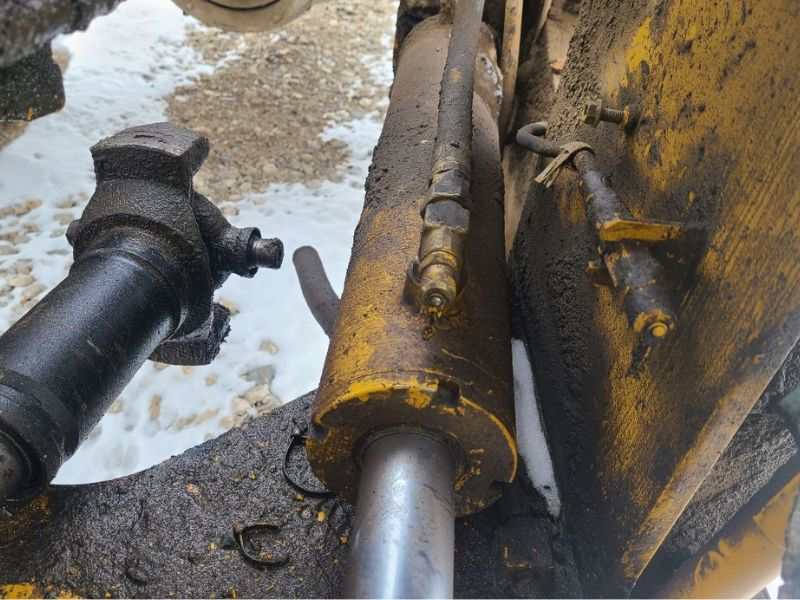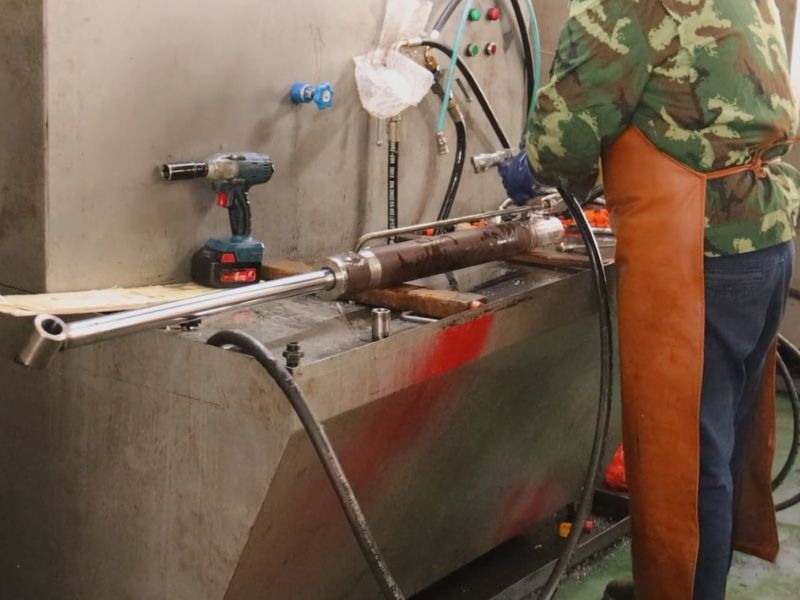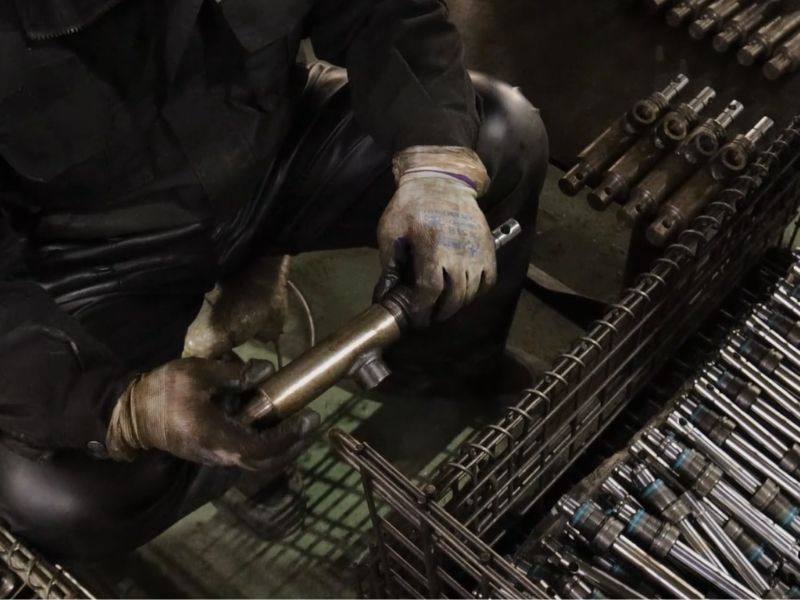Welcome to our in-depth exploration of hydraulic cylinder jerking, an issue that significantly impacts the efficiency and reliability of hydraulic systems across a broad spectrum of industries. In this comprehensive guide, we will analyze the causes, diagnosis, and solutions for hydraulic cylinder jerking, offering insights into both immediate fixes and long-term strategies. Additionally, we will examine other prevalent issues related to hydraulic cylinders, providing a well-rounded understanding of these essential components. Join us as we navigate the intricate world of hydraulic cylinders and uncover the secrets to achieving optimal performance and longevity.
One of the most frequent causes of hydraulic cylinder jerking is internal leakage. This leakage results in imbalances in hydraulic pressure, which is vital for the smooth operation of any hydraulic system. When the hydraulic fluid, serving as the system's lifeline, fails to flow consistently or evenly, it leads to erratic and uncontrolled cylinder movements. This problem often stems from compromised system integrity, where even a minor breach can cause significant performance disruptions.

The health of the seals in a hydraulic cylinder is crucial. Over time, these seals can degrade, leading to both internal and external fluid leaks. External leakage is often the first and most noticeable sign of seal wear. Not only does this leakage result in fluid loss, which is a waste of resources, but it also compromises the overall integrity of the system. Immediate maintenance is essential in such cases to prevent further damage and potential operational hazards.
The rod is a vital component of the hydraulic cylinder, and its surface condition is critical for smooth operation. Damage to the rod's surface, such as scratches or dents, can severely affect the seals, leading to leakage and, consequently, jerky movements. Misalignment of the cylinder adds another layer of stress, worsening the problem. This misalignment can occur due to regular wear and tear, improper installation, or external impacts.
Hydraulic fluid is the lifeblood of the hydraulic system. When this fluid becomes contaminated with particles, it can cause severe damage to the internal components of the cylinder. These contaminants act as abrasives, eroding the parts they come into contact with. This erosion not only results in inefficiencies but also contributes to the jerky movements of the cylinder.
In some instances, the design of the hydraulic cylinder itself may be at fault. Design flaws can introduce operational stresses that the system is not equipped to handle, leading to jerky movements. This could be due to inadequate specifications for the intended use or a fundamental flaw in the manufacturing process.

The process starts with a comprehensive visual inspection. This crucial step involves carefully examining the hydraulic cylinder for any obvious signs of wear or damage. Key areas to focus on include:
** External Leak Checks: Look for any signs of oil leaks around the seals, as these are often the first indicators of seal deterioration or damage.
** Rod Inspection: Examine the cylinder rod for any scratches, dents, or corrosion. These imperfections can gradually damage the seals, leading to internal leakage.
** Joint and Connection Points: Inspect all connection points for tightness and alignment, as loose connections can contribute to jerking movements.
1.Applying Pressure: By systematically applying pressure within the hydraulic system, you can simulate working conditions and observe the cylinder’s response.
2.Monitoring Response: Use gauges to monitor the pressure levels. Fluctuations or drops in pressure can indicate internal leaks or pressure imbalances that could be causing the jerking.
1.Alignment Tools: Employ precise alignment tools to measure and adjust the cylinder’s alignment within very fine tolerances. Even slight misalignments can lead to significant performance issues.
2.Stress Analysis: Conduct a stress analysis on the cylinder and its mounts. Over time, operational stress can cause mounts to weaken or shift, potentially leading to misalignment.
3.Mounting Hardware Inspection: Check all bolts, brackets, and other mounting hardware for signs of wear, corrosion, or fatigue. Replace any compromised components immediately to ensure the stability of the entire system. This not only resolves the jerking issues but also prevents future problems.
1.Viscosity Testing: Measure the viscosity of the hydraulic fluid. Incorrect viscosity can affect the flow rate and pressure, impacting the cylinder’s performance.
2.Chemical Analysis: In some cases, a more detailed chemical analysis of the fluid may be necessary to detect subtle contaminants or chemical breakdown products that are not visible through standard tests.
3.Historical Fluid Data Comparison: Compare current fluid test results with historical data to track changes or degradation over time. This can help identify patterns or issues that may not be immediately apparent.
1.Vibration Analysis: Utilize vibration analysis equipment to detect unusual vibrations within the hydraulic system that could indicate misalignment or internal component wear.
2.Pressure Cycle Testing: Conduct pressure cycle tests using sophisticated equipment to monitor how the cylinder responds to different pressures over time. This can reveal issues with internal seals or valves.
3.Telemetry and Remote Monitoring: For highly complex systems, consider implementing telemetry and remote monitoring systems. These systems can provide ongoing, real-time data about the cylinder’s performance, allowing for early detection of potential issues.
4.Simulation Software: Use advanced simulation software to model the hydraulic system’s performance under various conditions. This can help predict potential problems and guide maintenance strategies.
1.Adjusting Pressure Levels: Sometimes, the solution can be as simple as adjusting the pressure levels within the hydraulic system. Incorrect pressure settings can lead to imbalances, causing the cylinder to jerk. By recalibrating the pressure to the recommended levels, you can often alleviate immediate jerking issues.
2.Applying Temporary Seals: In cases where seal wear or damage is identified as the cause of jerking, applying temporary seals can be a quick fix. While this doesn’t solve the underlying problem, it can provide short-term relief until a more permanent solution is implemented.
1.Replacing Worn-Out Parts: Regular wear and tear of hydraulic cylinder components such as seals, rods, and bearings can lead to jerking problems. Replacing these worn-out parts is crucial for restoring the system’s efficiency. It's not just about fixing the current issue but also about preventing future problems.
2.Enhancing Fluid Quality: The quality of the hydraulic fluid plays a pivotal role in the system’s performance. Contaminated or degraded fluid can lead to a variety of problems, including jerking. Implementing a robust fluid management strategy, which includes regular testing and replacement of the hydraulic fluid, is key to maintaining the health of the system.
1.Establishing Maintenance Routines: Developing and adhering to a regular maintenance schedule is crucial. This includes routine inspections, pressure checks, fluid quality testing, and the immediate rectification of any identified issues.
2.Proactive Maintenance Approach: Transitioning from a reactive to a proactive maintenance approach can significantly reduce the occurrence of jerking problems. This involves regularly assessing the hydraulic system for potential issues and addressing them before they escalate into major problems.
1.Regular Inspections: Conduct thorough inspections of the hydraulic cylinders on a regular basis. Look for signs of wear, seal degradation, or damage to the rod and cylinder body.
2.Cleanliness: Keep the hydraulic system, especially the cylinder rods and seals, clean. Dirt and debris can cause damage to seals and rods, leading to leaks and other issues.
3.Lubrication: Ensure proper lubrication of moving parts. Adequate lubrication reduces friction, which can cause wear and tear over time.
4.Pressure Checks: Regularly check the system’s pressure settings. Incorrect pressure can lead to various problems, including jerking movements in cylinders.

1.Follow Manufacturer Guidelines: Always install and use hydraulic cylinders according to the manufacturer’s specifications. Incorrect installation can lead to misalignment, undue stress, and subsequent problems.
2.Training for Operators: Ensure that operators are trained in the proper use of hydraulic systems. Misuse or overloading can lead to rapid wear and potential failure.
1.Fluid Quality: Regularly check the quality of the hydraulic fluid. Look for signs of contamination, such as water or particulates, which can damage the system.
2.Fluid Replacement: Replace the hydraulic fluid at recommended intervals. Over time, fluid can degrade or become contaminated, which impairs system performance.
In conclusion, understanding and effectively addressing hydraulic cylinder jerking problems and other related issues is critical for the maintenance and efficient operation of hydraulic systems. Remember, a proactive approach combined with a thorough understanding of the mechanics of hydraulic systems is key to ensuring the longevity and reliability of these important industrial components. This guide provides valuable insights and practical knowledge to help you effectively manage and resolve hydraulic cylinder challenges.